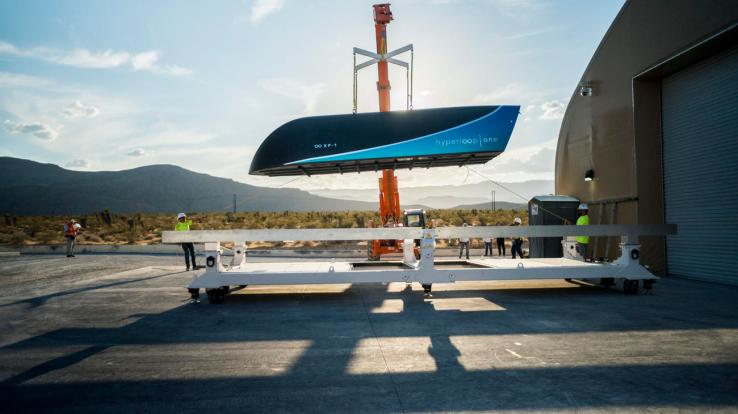Despite all odds, Hyperloop One just raised another $85 million

Hyperloop One, a three-year-old, L.A.-based company working to create near-supersonic trains that can whisk both passengers and cargo in giant pneumatic tubes at speeds of many hundreds of miles per hour, has raised $85 million in fresh funding, as first reported in Recode.
The round, which comes from DP World, Caspian VC Partners, WTI and OurCrowd.com, brings the company’s total funding to $245 million.
It’s a lot of money for what still seems like a pipe dream, no pun intended. As the Verge noted in its own report on the new round, Hyperloop One still has “no commercial product, no revenue stream, no government approval, and no proof that its ultrafast transit system would even be safe for human passengers.”
Though the company has proudly touted its proof of concept — in late July, in the Nevada desert, it shot a 28-foot-long pod made of aluminum and carbon fiber down a 1,600-foot-long concrete tube at 192 miles per hour in five seconds, then immediately sent footage of the feat to numerous media outlets — its challenges are numerous and well-documented.
Among them: any route would need to be straight and level. Meanwhile, land is expensive; presumably not all landowners would welcome hosting a hyperloop in their backyard. It could take tens of billions of dollars and decades to build. You get the idea. Hyperloop has also talked up its partnerships with governments around the world, though these are, for now, merely feasibility studies.
Apparently, such obstacles haven’t diminished the enthusiasm of the company’s newest investors, whose new round of funding reportedly values Hyperloop One at $700 million.
Still, it may grow harder for people to maintain their enthusiasm in its expensive approach, given that the idea’s earliest advocate, Elon Musk, has himself moved on to a project that he thinks will be less costly, more practical and will require less time: tunneling underground.
Indeed, earlier this week at TechCrunch’s Disrupt event in San Francisco, we talked about Musk with venture capitalist Steve Jurvetson, an investor in and director on the boards of two other Musk-led companies — SpaceX and Tesla. He suggested that building smaller, short-range tunnels for electric vehicle transport, which is what Musk is setting out to do with a new company, The Boring Company, makes more sense in the short term, and that the smaller, more cost-efficient tunnels he wants to build could eventually supplant the idea of a hyperloop.
“I personally love the idea [of The Boring Company], in fact, even more than the hyperloop idea, of digging these tunnels,” Jurvetson said.
“The insight I think that’s so powerful is that if you only envision electric vehicles in your tunnels, you don’t need to do the air handling for all carbon monoxide, carbon dioxide, you know, basically pollutants for exhaust. You could have scrubbers and a variety of simpler things that make everything collapse to a smaller tunnel size, which dramatically lowers the cost … The whole concept of what you do with tunnels changes.”
The “[land] right of ways, which was a killer to hyperloop as a concept, well, [tunneling is] potentially solving that problem, too.”
The Boring Company confirmed in a statement to Wired last month that it sees moving electric cars as a starting point, but that it plans also to develop its own hyperloop technology.
“At the Boring Company, we plan to build low-cost, fast-to-dig tunnels that will house new high-speed transportation systems,” the spokesperson wrote in a statement to Wired. “Most will be standard pressurized tunnels with electric skates going 125+ mph. For long-distance routes in straight lines, such as NY to DC, it will make sense to use pressurized pods in a depressurized tunnel to allow speeds up to approximately 600+ mph (aka Hyperloop).”